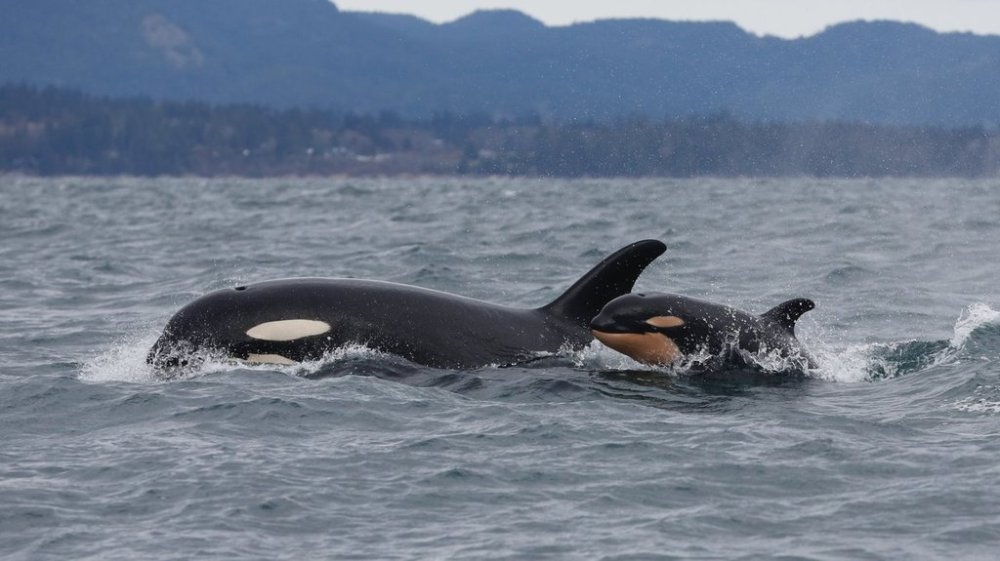Science
Southern Resident Killer Whales Face Slow Decline Amid Threats

The latest survey of endangered southern resident killer whales highlights their stagnation and gradual slide toward potential extinction. According to Michael Weiss, a director with the Center for Whale Research, the findings underscore the urgent need for more robust protective measures. Without significant intervention, these iconic marine mammals may face an uncertain future.
Weiss attributes the decline to several critical factors, including diminishing populations of chinook salmon, increasing pollution, and escalating noise from maritime traffic such as cruise ships and freighters in their natural habitat off the coasts of Washington state and British Columbia. “We’re not talking about southern residents going extinct in the next five years, but we are talking about a fairly good chance of at least one of the three pods being gone within the next 50 years,” Weiss told The Canadian Press.
Population Status and Reproductive Challenges
The annual survey conducted as of July 1, 2025, found the overall population of southern resident killer whales stands at 74, a marginal increase from 73 the previous year. During the census period, researchers noted four births among the three distinct pods, but only two calves survived. The loss of adult male K26 from K pod later in the summer was especially concerning. Weiss described this as a “huge loss” for the population, which is already grappling with low genetic diversity as numbers plateau.
Genetic diversity is critical for the orcas’ survival, and Weiss pointed out that the population is “very inbred,” which complicates their resilience to disease. The survey identified 27 males of reproductive age, yet fewer are breeding at any time. The youngest confirmed male to have reproduced was just 15 years old, while Weiss considers the optimal reproductive age for southern resident males to be in their early twenties. The death of K26, who was the oldest male in his pod and had successfully reproduced, exacerbates the population’s challenges.
Comparative Population Dynamics
In contrast to the declining southern residents, J pod appears to be experiencing a more favorable situation, with a lower mortality rate among adults in recent years. Weiss emphasized the troubling state of K pod, which has shrunk to just 14 members, marking the lowest number recorded in the survey’s 50-year history. A female in K pod last gave birth in 2022, and prior to that, successful births had not occurred for nearly a decade.
Calf mortality rates remain high among the southern residents, with approximately 50 percent of calves not surviving their first year. Weiss noted that southern resident females are reproducing at rates roughly half that of their counterparts in the northern resident population, which is thriving. “The only pod that’s growing is J pod,” he said, cautioning that changes in mortality rates can happen rapidly.
The survey also revealed that only 11 immature whales younger than 10 years old are present, accounting for just 15 percent of the southern residents’ population. In comparison, immature orcas make up 47 percent of the northern resident population, showcasing a stark difference in the health and viability of the two groups.
Weiss pointed out that southern residents are heavily reliant on chinook salmon, which have been experiencing declines. As these salmon migrate from northern waters to rivers along the Pacific coast, southern residents often get the “last crack” at them, facing competition from fishing fleets and other killer whale populations.
To mitigate these challenges, Weiss advocates for restoring salmon habitats and shifting chinook fisheries away from ocean waters and estuaries. “If you’re fishing out in the ocean where everything’s mixed up, it’s really hard to avoid taking fish from these declining populations,” he stated.
Urbanization of their habitat further complicates the situation. The whales are hunting in areas heavily trafficked by cruise ships and freighters, making it increasingly difficult to find food. “It’s like trying to find food on a highway,” Weiss explained.
The findings from this survey, published on October 13, 2025, emphasize the pressing need for increased protective measures to ensure the survival of southern resident killer whales. As their numbers continue to hover at a precarious plateau, the call for action has never been more urgent.
-

 Politics4 weeks ago
Politics4 weeks agoSecwepemc First Nation Seeks Aboriginal Title Over Kamloops Area
-

 World5 months ago
World5 months agoScientists Unearth Ancient Antarctic Ice to Unlock Climate Secrets
-

 Entertainment5 months ago
Entertainment5 months agoTrump and McCormick to Announce $70 Billion Energy Investments
-

 Science5 months ago
Science5 months agoFour Astronauts Return to Earth After International Space Station Mission
-

 Lifestyle5 months ago
Lifestyle5 months agoTransLink Launches Food Truck Program to Boost Revenue in Vancouver
-

 Technology3 months ago
Technology3 months agoApple Notes Enhances Functionality with Markdown Support in macOS 26
-

 Lifestyle3 months ago
Lifestyle3 months agoManitoba’s Burger Champion Shines Again Amid Dining Innovations
-

 Top Stories2 months ago
Top Stories2 months agoUrgent Update: Fatal Crash on Highway 99 Claims Life of Pitt Meadows Man
-

 Politics4 months ago
Politics4 months agoUkrainian Tennis Star Elina Svitolina Faces Death Threats Online
-

 Sports5 months ago
Sports5 months agoSearch Underway for Missing Hunter Amid Hokkaido Bear Emergency
-

 Politics5 months ago
Politics5 months agoCarney Engages First Nations Leaders at Development Law Summit
-

 Technology5 months ago
Technology5 months agoFrosthaven Launches Early Access on July 31, 2025



















